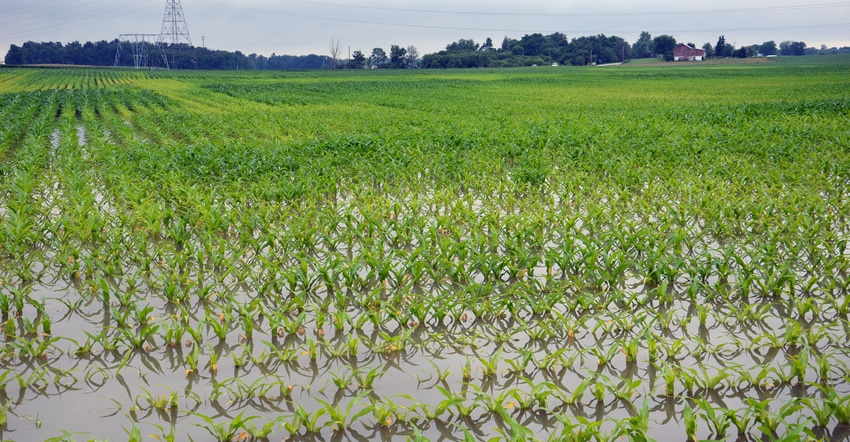
Maybe you’re not shooting for yields big enough to make the National Corn Growers Association report each year. Yields over 600 bushels per acre have been recorded in the contest. Maybe you would be happy with bumping your farm average 10 bushels per acre.
If you’re in the latter category, Bob Nielsen, Purdue University corn specialist, can help. One place to start is by recognizing common yield-limiting factors. See how many of these factors might be holding back yields on your farm. Then you can take steps to resolve these issues
1. Inadequate soil drainage. This is still one of the most common factors limiting corn yields, Nielsen says. It’s true even though many farmers have aggressively installed pattern tile over the past two decades.
“The trouble is all the problems poor drainage can cause,” Nielsen says. “When you have ponding or saturated soils, you may have stand loss early in the season, and you will likely see nitrogen loss. You are at risk for more soil compaction, and if you till fields, cloddy conditions at planting can impact stands. Delayed field operations in fields without tile can mean a later start and delay applications of herbicides and fungicides.”
2. Hybrid performance. Even with modern genetics, there are large differences in yield potential and stress tolerance amongst hybrids, Nielsen says. Do you have the right hybrids for your farm?
“You need to look at how hybrids handle stress and not just at yield potential,” he advises. “You can leave 20 to 30 bushels per acre on the table in differences in stress tolerance alone.”
3. Excessive soil compaction. Soil compaction from tillage operations under wet conditions or from heavy traffic areas can hold yields back more than you think, he notes. “Soil compaction makes poor drainage even poorer,” Nielsen says. Soils reach field capacity sooner and running heavy equipment on these soils leads to future limited root growth and loss of yield potential.
4. Weed competition. Weeds can steal yield, especially if they get a jump early in the season, Nielsen says. More weeds are showing resistance to herbicides, and it is a problem that won’t go away, he says. Seek out expert help not only on how to control weeds this season, but how to prevent further development of weed resistance long-term. Preserve the tools you have.
5. Foliar diseases. Tar spot joins gray leaf spot and northern corn leaf blight as major foliar diseases in the Corn Belt, with southern rust working its way into the picture when environmental conditions are right. Selecting hybrids with genetic resistance is important, but scouting for development of foliar diseases is key, he says. Be ready to spray fungicides when conditions warrant. “You need to keep corn plants as healthy as possible as late into the season as you can,” Nielsen says. His data indicates a sizable percentage of yield comes from kernel size and weight determined in the last part of the season.
6. Nutrient deficiencies. Know your soil nutrient and pH levels through a regular soil testing program, Nielsen advises. If you have low pH soils, are you correcting it by applying lime? “Improve your agronomic knowledge and be able to better identify yield-limiting factors, including signs of nutrient deficiencies,” he concludes.
About the Author(s)
You May Also Like




